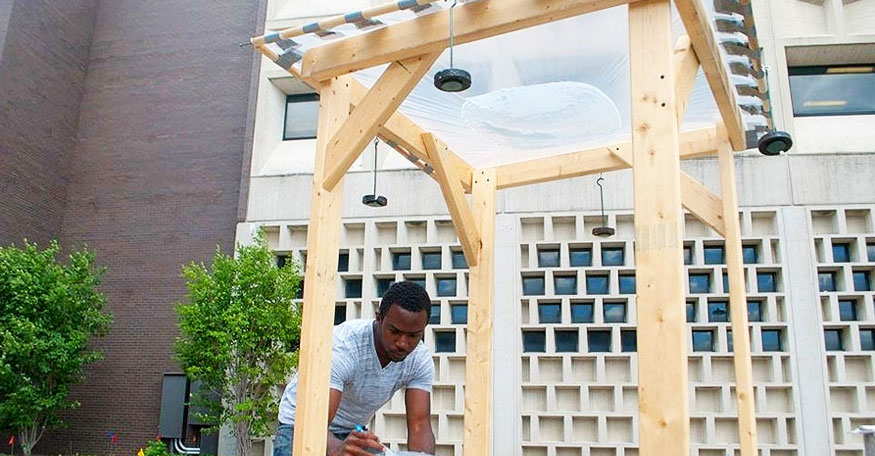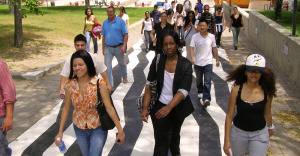Water is essential to every human being. In typical situations, a person can only go 3-4 days without consuming water to help regulate body temperature, keep joints lubricated, and help filter waste from their body. Across the globe, only 3% of Earth’s water is fresh water while 97% of the water on Earth is salt water. In some places, it is difficult to find access to a clean supply of drinking water, as an estimated 783 million people do not have access to clean water and almost 2.5 billion do not have access to adequate sanitation.
At the University at Buffalo, undergraduate students are working with an engineering professor to provide access to clean water in an easy to use and inexpensive to make device. Led by Deshawn Henry, a sophomore civil engineering major, the work centers around a device that uses sunlight to heat and disinfect polluted water, making it safe to drink and consume. By placing a magnifying glass set inside a sturdy frame, a liter of water can be heated to between 130 and 150 degrees Fahrenheit in a little more than an hour, destroying 99.9 percent of bacteria and pathogens. In developing countries, this could be a huge benefit.
The lens is made with a plastic sheet covered with water supported by a wooden frame. The frame holds a small container of water below the lens in line with a focal point created from a concentrated ray of sunlight, which heats the water enough to eliminate the bacteria in it. The lens functions freely once assembled, barring weather interruptions like cloudy, overcast skies. However, due to the sun’s movement throughout the day, the container needs to be repeatedly shifted to match the focal point.
The issue at hand is finding ways to process more water in order to provide for families or groups of people. Deshawn studied adding more water and using sheets of different thicknesses. He found that adding more water to the lens improved efficiency, as larger areas of water transmitted more energy from sunlight. However, thicker plastic sheets consumed more energy from light, lowering the lens’ efficiency.
Building a larger water lens that remains efficient is the next step in research. A family of five would need a lens at least three times the size of the device Henry constructed, which was designed to heat one liter of water at a time. If ways to heat and process more water at a time can be found, the end result could provide a simple solution to obtaining clean drinking water from any of the fresh water sources near to a community.





wow, this technology can be a huge benefit for developing countries.
Nice to see good things coming from UB.
This is a good initiative and a cheap way of heating water